The importance of inversions: finding your Salamba Sarvangasana (shoulder stand)
An Iyengar approach to overcoming the kleśas in shoulder stand
An inverted position of the body involves bringing the legs and body above the head. There is particular emphasis in Iyengar yoga on inverted postures, in which we lift the body against gravity. If you begin an Iyengar yoga class, you will likely be introduced to inversions within the first couple of months. In Yoga in Action: A Preliminary Course, which outlines weekly sequences of poses in the order they should be learned and practiced, Ardha Halasana (half plow pose) is introduced in week 2, Eka Pada Sarvangasana (one leg shoulder stand) in week 4, and Salamba Sarvangasana (supported shoulder stand) in week 5. Once learned, Salamba Sarvangasana and its variations are included in nearly every yoga sequence. I practice Sarvangasana just about every day.
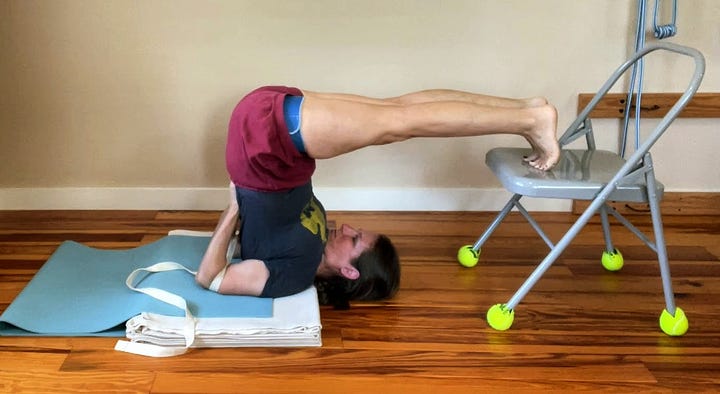
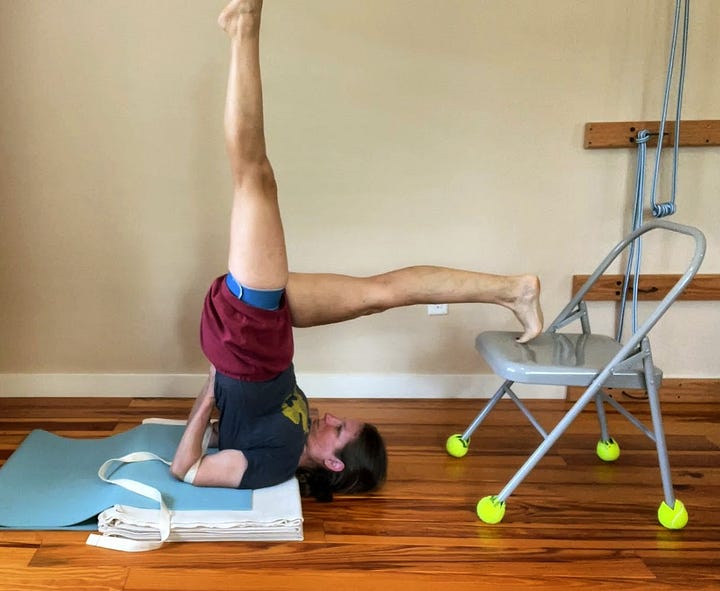
For those with an established practice, Sarvangasana is considered a calming asana, usually done toward the end of a practice. As the Iyengars note in Basic Guidelines for Teachers (2002), this pose is known to “pacify the system, cool the body, soothe the nerves and abate the mind”. But for those who are new to inversions, Sarvangasana may not necessarily have these effects initially. The upside-down position and the chin lock that occurs as the chest moves toward the chin are not habitual in daily life. Lifting the weight of the body above the head can be daunting to the beginner. In Arogya Yoga, B.K.S. Iyengar says, “it is ironic that human beings, who are born upside down, are filled with an apprehension of the upturned state”. He is referring, in this case, to Sirsasana (headstand), but the same applies to other inversions.
The yoga sutras of Patanjali mention several afflictions that act as obstacles to enlightenment. We can also view these afflictions, the kleśas (Sutras II.3-II.9), in a less spiritual sense – as obstacles to the performance of asanas. As such, the kleśas provide a useful framework for viewing the initial resistance yoga students may have when first attempting Sarvangasana.
1) Avidyā: Students may initially feel ignorance, a lack of knowledge. The shape and orientation of shoulder-stand is unfamiliar, unknown, and thus somewhat stressful, which results in heat and maybe even franticness rather than calm and coolness.
2) Asmitā: Caught up in a feeling of “I”, individuality, and ego, it may be distressing to a beginner student to be so awkward and uncomfortable in class – students may feel that they are failing in the eyes of the teacher or that an initial struggle with Sarvangasana is a poor reflection of themselves as people and yoga practitioners. This discomfort can add to the feeling of heat produced in the pose.
3) Rāga: Attachment to pleasure can cause us to seek asanas that we feel more comfortable with – if Sarvangasana isn’t a preferred pose, students may be tempted to avoid it in favor of poses that suit their native abilities better.
4) Dveşa: early-on, students may actually feel some animosity toward or aversion to shoulder stand, as they feel uncomfortable or worried about how it may affect the neck.
5) Abhiniveśa: a fear of breaking one’s neck may be tied up in the fear of death, so that reluctance to stay long in the pose may be a form of clinging to life.
As B.K.S. Iyengar laments in Arogya Yoga, “Unfortunately people tend to dwell more on the dangers caused by incorrect performance of inverted postures than the virtues of their many benefits”.
Because incorrect performance of shoulder stand could potentially result in injury (the dangers to which Iyengar refers), I don’t recommend trying it unless you are in a class setting taught by a certified Iyengar yoga teacher (CIYT). For my classes, visit
In Iyengar yoga, we develop our knowledge and comfort with asanas gradually. Other poses are introduced before Salamba Sarvangasana to prepare the mind and body. As knowledge increases, fear decreases, and students gradually learn comfort in lifting the body against gravity.
A good starting place is Setu Bandha Sarvangasana (bridge pose).
This pose can be done on a brick or on bolsters. Adding height under the feet is good if your low back troubles you.
Though the legs do not end up over the head in this variation, it still begins the process of teaching us to “raise the legs while the head and shoulders are on the floor” (Arogya Yoga). This variation of Sarvangasana opens and creates space in the chest, resulting in a calmer mind. Here, too, we learn to tolerate the position of the chest meeting the chin.
Halasana (plow pose) is another variation that we typically teach before Salamba Sarvangasana.
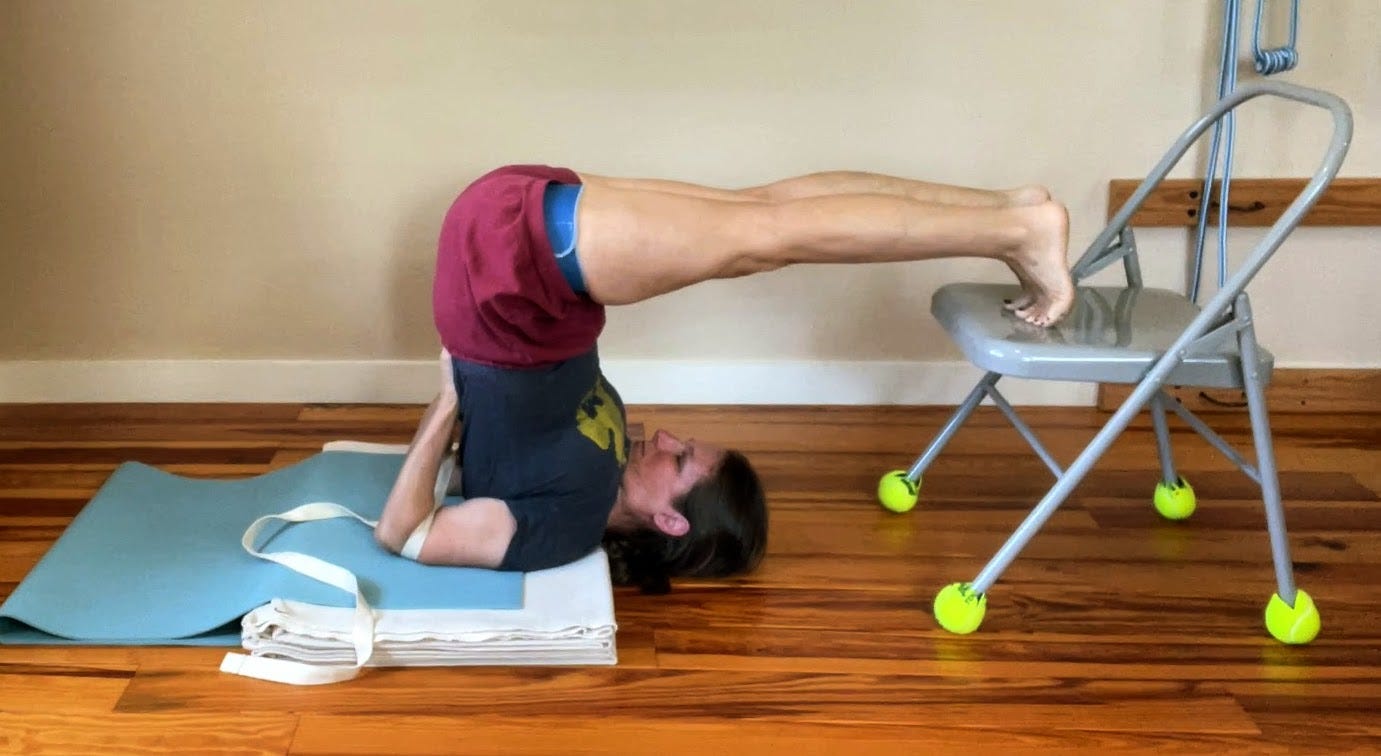
Even as students become more experienced, we typically start in Halasana before raising the legs into Sarvangasana. Halasana alleviates fear about balance because it is very stable, with a tripod made up of the neck/shoulders, the upper arms, and balls/toes of the feet. From this stable tripod, beginners can learn to lift the back and shoulder blades, needed for full Sarvangasana, and become comfortable with the chest meeting the chin.
With practice of these two variations of Sarvangasana, the afflictions (the kleśas) should lessen.
1) Knowledge and comfort increases, lessening Avidyā (ignorance).
2) The student will think less about the self, as it becomes a natural position to take, lessening Asmitā (sense of “I”).
3) Avoidance and animosity will decrease, as Rāga (attachment to pleasure) and Dveşa (aversion to pain) are lessened.
4) The fear of breaking one’s neck in the pose will not feel so imminent, so Abhiniveśa (clinging to life) will no longer interfere with the ability to enter the pose.
Ultimately, Iyengar practitioners typically practice Salamba Sarvangasana using blankets as height under the shoulders to support the natural curve of the neck.
In Arogya Yoga, B.K.S. Iyengar referred to Sarvangasana as the mother of all asanas: “If there is one asana that regulates the entire body mechanism, pacifies mental turbulence, stimulates the intellect and teaches humility, it is Sarvangasana. Like a mother, it lovingly nurtures the body, mind and spirit in every way. Sarvangasana enhances mental fortitude and emotional strength.” It’s no wonder that Sarvangasana is an important and regular part of an Iyengar practice!
If you learned something from this post, please subscribe!
References
Iyengar, Geeta. 2000. Yoga in Action: Preliminary Course. YOG.
Iyengar, BKS and Iyengar, Geeta. 2002. Basic Guidelines for Teachers. YOG.
Iyengar, BKS. 2019. Arogya Yoga. Rohan Prakashan.


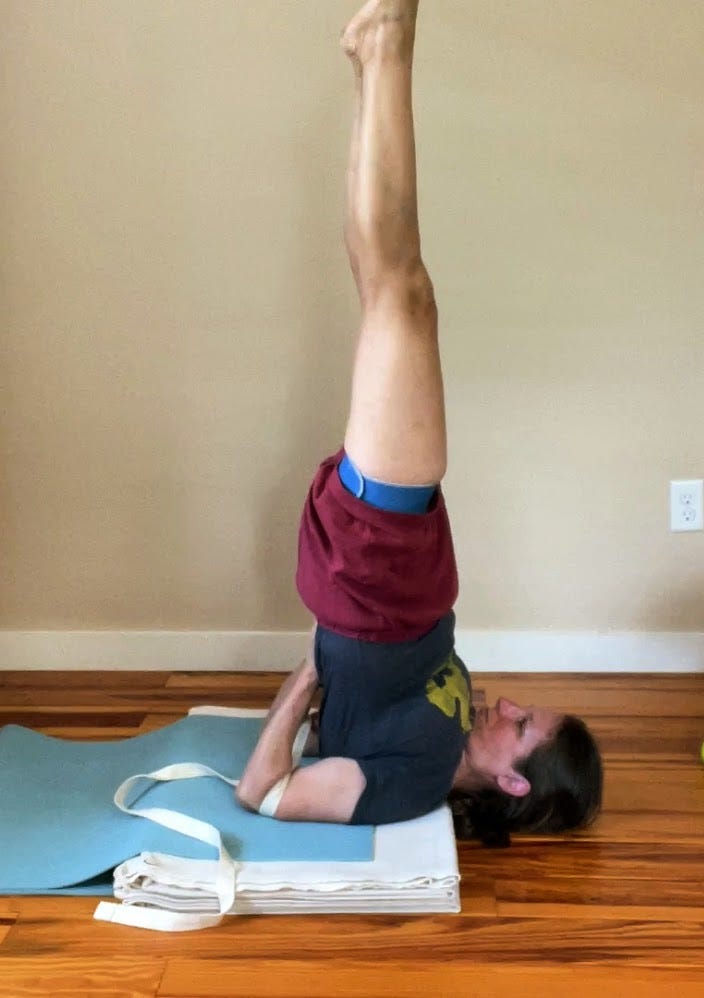
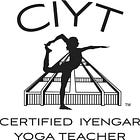
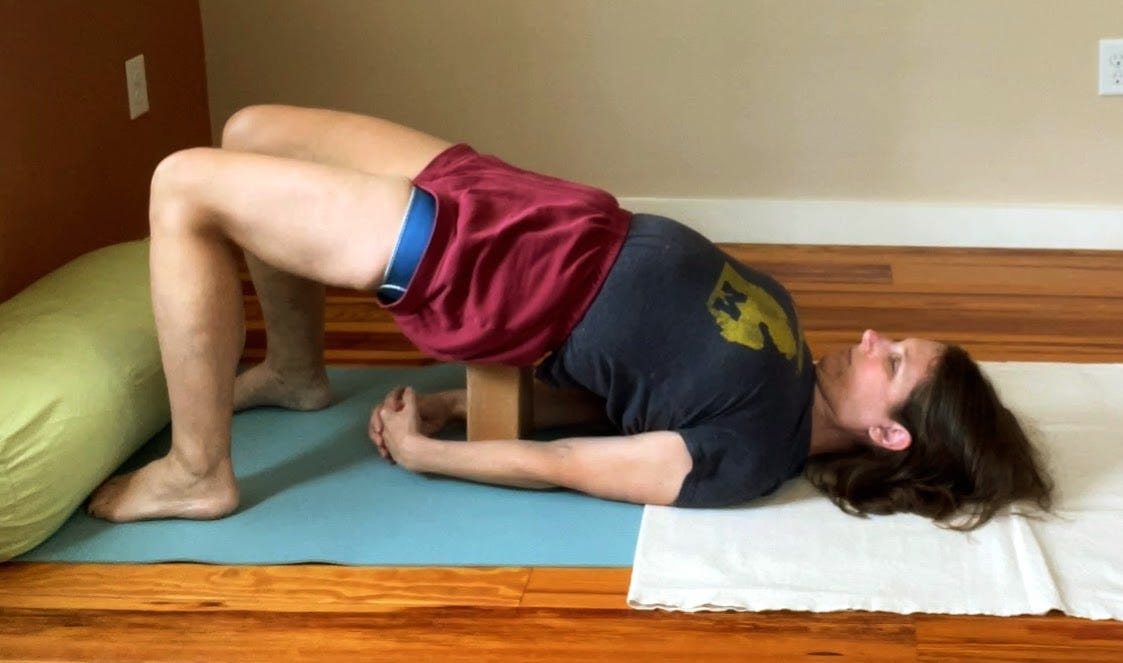
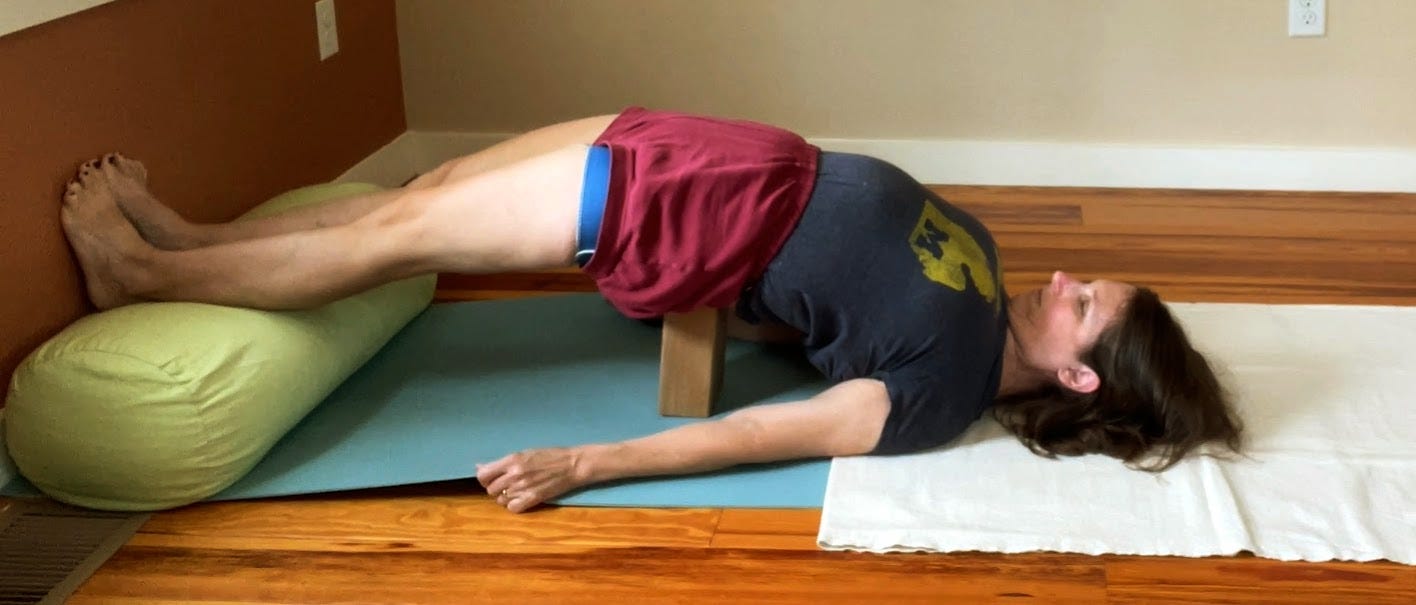
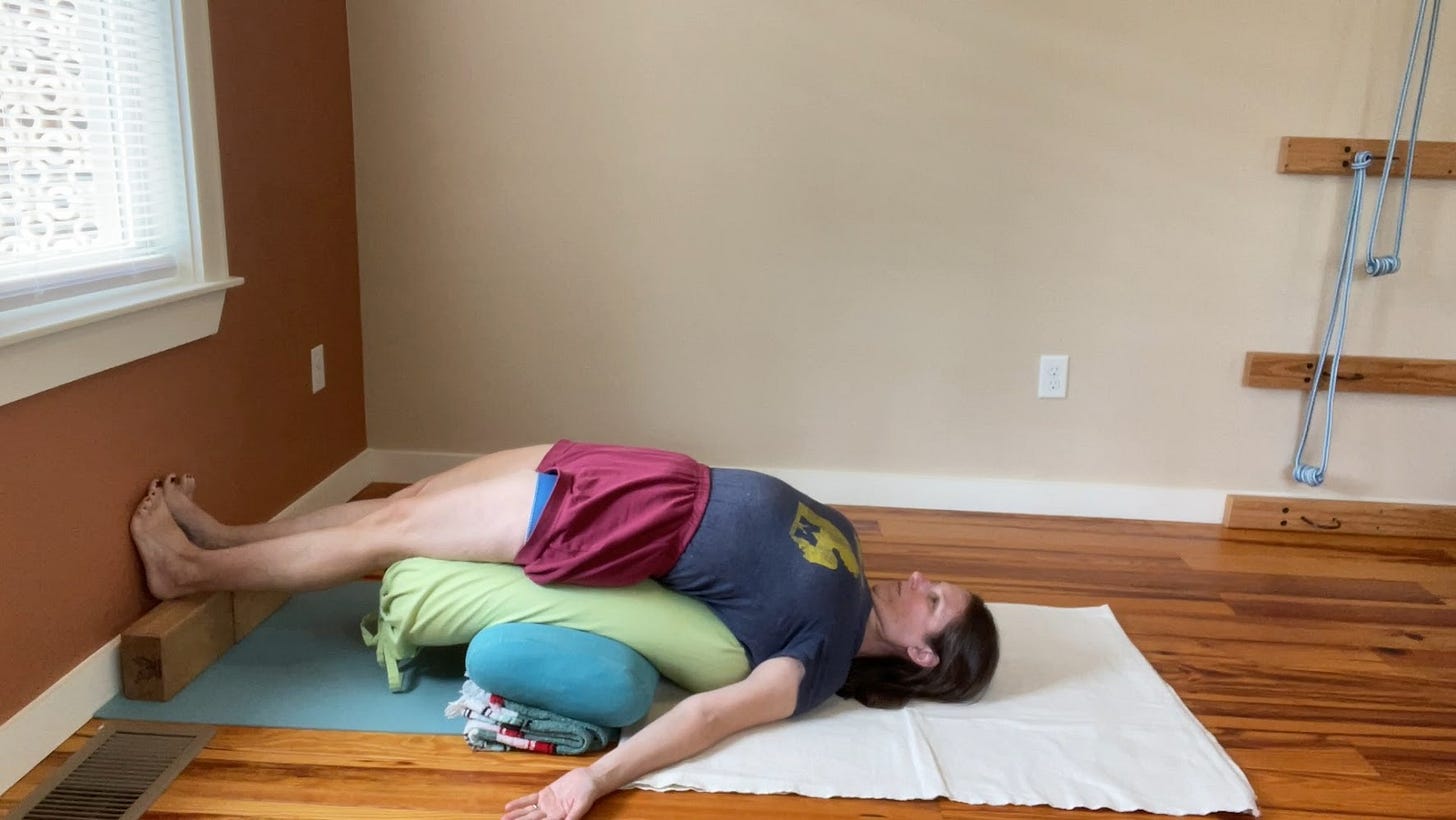
Good detailed article. You oughta think about submitting it to iynaus I believe they do their magazine on Substack now. No pressure
Hope you’re well 🪷